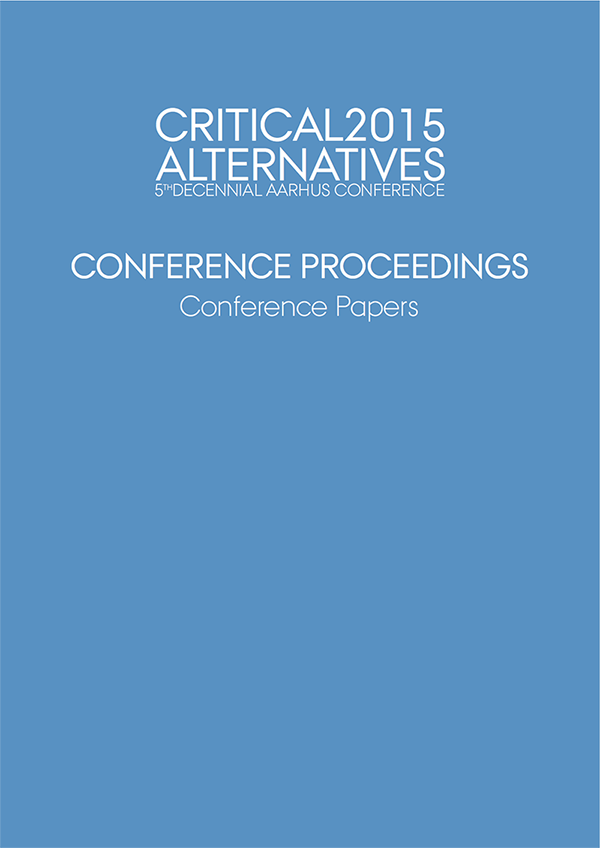Multi-Lifespan Information System Design
DOI:
https://doi.org/10.7146/aahcc.v1i1.21396Keywords:
Multi-lifespan information system design, design methods, design research, design theor, design thinkingAbstract
Contemporary information ecosystems evolve at lightening speed. Last year’s cutting edge innovations are this year’s standard fare and next year’s relics. An information innovation can be implemented, made available through the Internet, and appropriated within 24 hours. Yet, significant societal problems engage much longer timeframes. In 2010 Friedman and Nathan pointed to a fundamental disconnect between mainstream design thinking and these longer-term problems. To address this disconnect, they proposed a multi-lifespan information system design framing.
This workshop builds on previous work by the organizers and others to: (1) elaborate and identify new opportunities and challenges in taking up multi-lifespan information system design problems, and (2) generate critical and constructive discussions for further development of multi- lifespan information system design thinking.
References
Bainbridge, W. S. (2014). Death of digital worlds. In Digital Death: Mortality and Beyond in the Digital Age, C. M. Moreman and A. D. Lewis Eds. (pp. 215- 232). Praeger, Santa Barbara.
Duranti, L. (2012). Records in the cloud: Towards InterPARES-Trust. Available at: http://93.63.166.138:8080/dspace/handle/2012/97
Friedman, B., and Nathan, L. P. (2010). Multi-lifespan information system design: A research initiative for the HCI community. In Proceedings of CHI 2010, ACM Press (2010), 2243-2246.
Garaba, F. (2012). Availing the liberation struggle heritage to the public: some reflections on the use of Web 2.0 technologies in archives within the East and Southern Africa Regional Branch of the International Council on Archives (ESARBICA). Information Development 28(1), 22-31.
Heaney, C. (2013). The ‘forever problem’: Nuclear waste as information. In Proceedings of iConference 2013, ACM Press (2013), 659-661.
Jacobs, R., Benford, S., Selby, M., Golembewski, M., Price, D., and Gianniaci, G. (2013). A conversation between trees: what data feels like in the forest. In Proceedings of CHI 2013, ACM Press (2013), 129- 138.
Liu, S., Palen, L., and Giaccardi, E. (2011). Heritage matters in crisis informatics: how information and communication technologies can support legacies of crisis events (pp. 65-86). In Crisis Information Management: Communication and Technologies, C. Hagar, Ed. Oxford, England, Chandos Publishing.
Nathan, L.P., and Friedman, B. Interacting with policy in a political world: reflections from the Voices from the Rwanda Tribunal project. interactions 17, 5 (2010), 56-59.
Nathan, L.P., Grey, N.C., Lake, M., Nilsen, T., Utter, E., Utter, R.F., Ring, M., Kahn, Z., and Friedman, B. Multilifespan information system design: investigating a new design approach in Rwanda. In Proc. iConference 2011, ACM Press (2011), 591-597.
Nathan, L. P. (2012). Sustainable information practice: an ethnographic investigation. Journal of the Association for Information Science and Technology 63(11), 2254-2268.
Tomlinson, B., Blevis, E., Nardi, B., Patterson, D. J., Silberman, M. S., and Pan, Y. (2013). Collapse informatics and practice: theory, method, and design. ACM Transactions on Computer-Human Interaction (TOCHI) 20(4): Article 24.
Moncur, W. and Kirk, D. (2014). An emergent framework for digital memorials. In Proceedings of DIS 2014, ACM Press (2014), 965-974.
Odom, W., Banks, R., Kirk, D., Harper, R., Lindley, S., and Sellen, A. (2012). Technology heirlooms?: considerations for passing down and inheriting digital materials. In Proceedings of CHI 2012, ACM Press (2012), 337-346.
Yoo, D., Lake, M., Nilsen, T., Utter, M.E., Alsdorf, R., Bizimana, T., Nathan, L.P., Ring, M., Utter, E.J., Utter, R.F., and Friedman, B. Envisioning across generations: A multi-lifespan information system for international justice in Rwanda. In Proc. CHI 2013, ACM Press (2013), 2527-2536.




